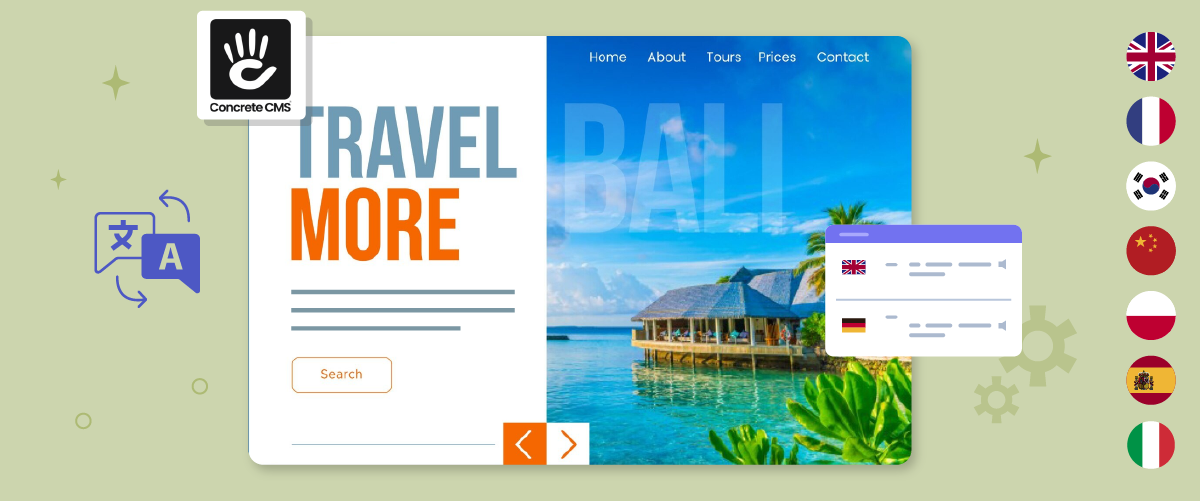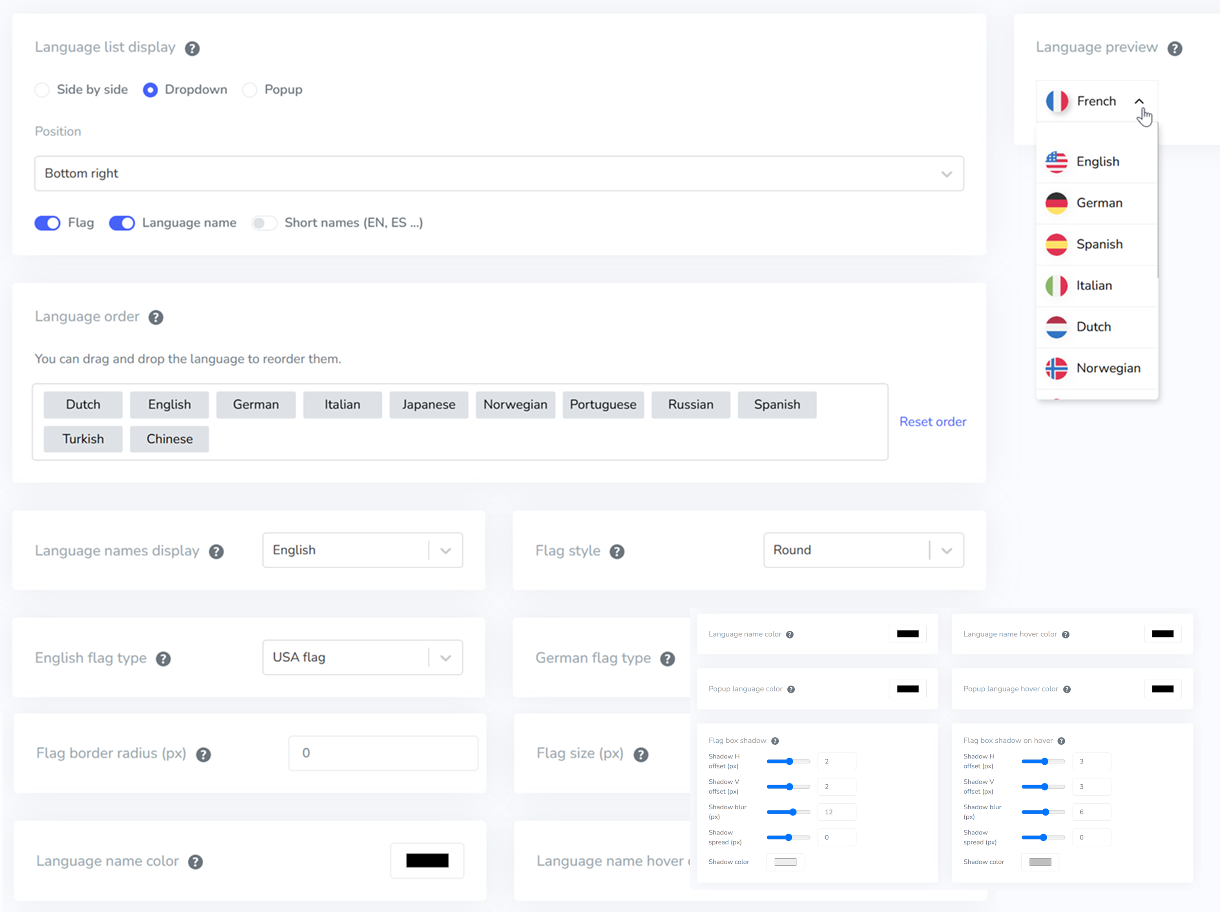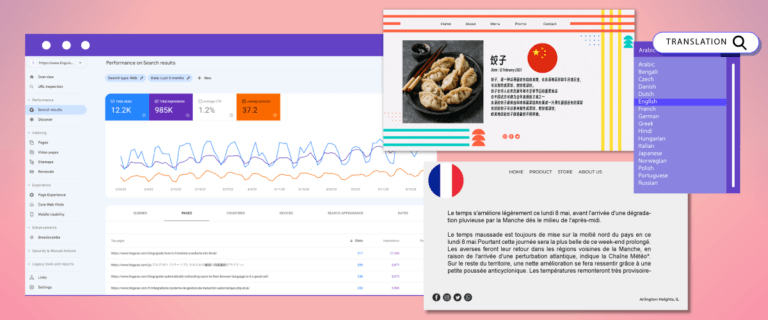Do you have a website built with Concrete CMS? If yes, consider implementing automatic translation. Automatic translation allows websites to expand their audience by effortlessly providing content in multiple languages.
This article will guide you through implementing automatic translation on Concrete CMS. We will also explore real-world examples of multilingual websites using Concrete CMS and how you can achieve similar results by leveraging tools like Linguise for seamless translation.
The benefit of implementing automatic translation on Concrete CMS
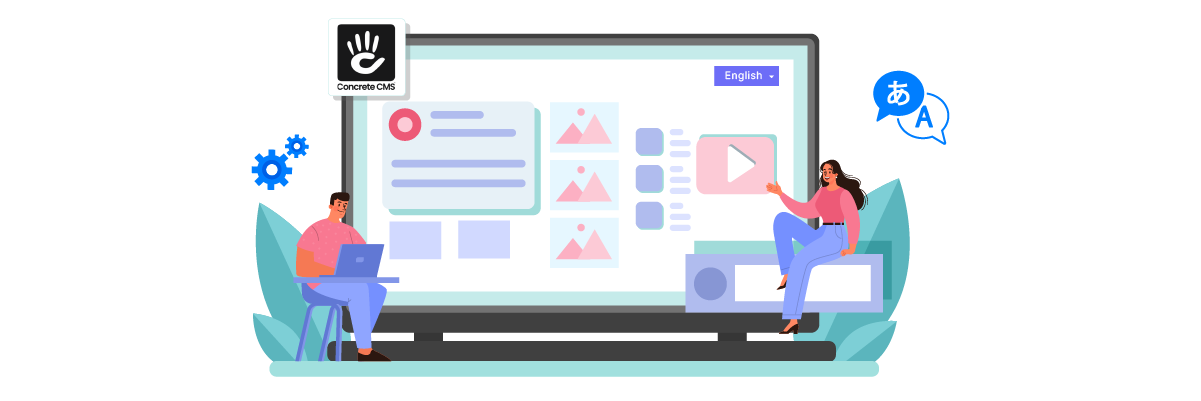
Before discussing how to implement automatic translation in Concrete CMS, here are some benefits that both readers and website owners will feel.
- Greater global market reach: By providing automatic translation options into multiple languages, the site’s content can be accessed by readers from different countries in their language. In addition, site owners also get the opportunity to expand their audience without the need to create separate content for each language.
- Better user experience: When content is presented in their native language, readers can understand it more easily and quickly. Site owners will also find that their website has a high visit time and user engagement rate because the content is easier to digest.
- Increased conversion potential: when they fully understand what is being offered, readers are more likely to take the desired action (such as buying a product or signing up for a newsletter). This will certainly benefit the site owner as it will get an increase in sales or sign-ups from international markets.
- Better search visibility: By providing automatic language and translation features, the site has a greater chance of appearing in search results in different languages and countries. This will also help increase website traffic.
Concrete CMS site owners can expand their global reach by implementing automatic translation.
Examples of multilingual websites with Concrete CMS
Currently, 42,073 live websites use Concrete CMS, and an additional 129,366 sites have historically used Concrete CMS.
With such many users, many of these sites have effectively implemented multilingual features. Here are some examples of multilingual websites.
Embroideres
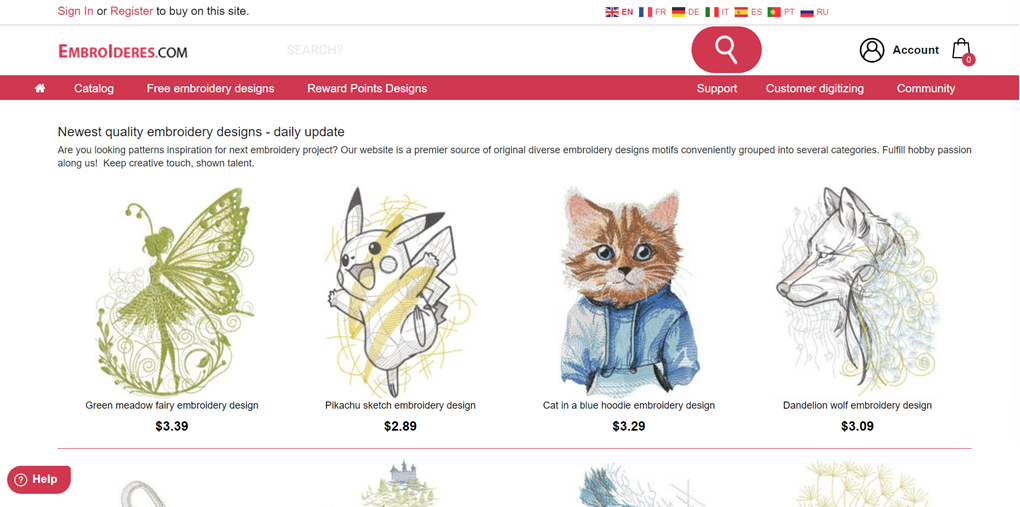
Embroideres.com is a website that offers a wide range of high-quality digital embroidery designs for embroidery enthusiasts and professionals. The site provides a diverse collection of embroidery patterns that are updated daily, covering various categories such as animals, flowers, characters and more. Users can purchase and download individual designs on their embroidery machines, with affordable prices ranging from $2.89 to $3.39 per design, as seen in the image.
The language selector at the page’s top right corner is a notable feature of the site. This allows visitors to access content in multiple languages, including English, French, German, Italian, Spanish, Portuguese, and Russian. This feature greatly expands the site’s global reach, allowing users from different countries to comfortably browse and purchase embroidery designs in their preferred language.
Audials
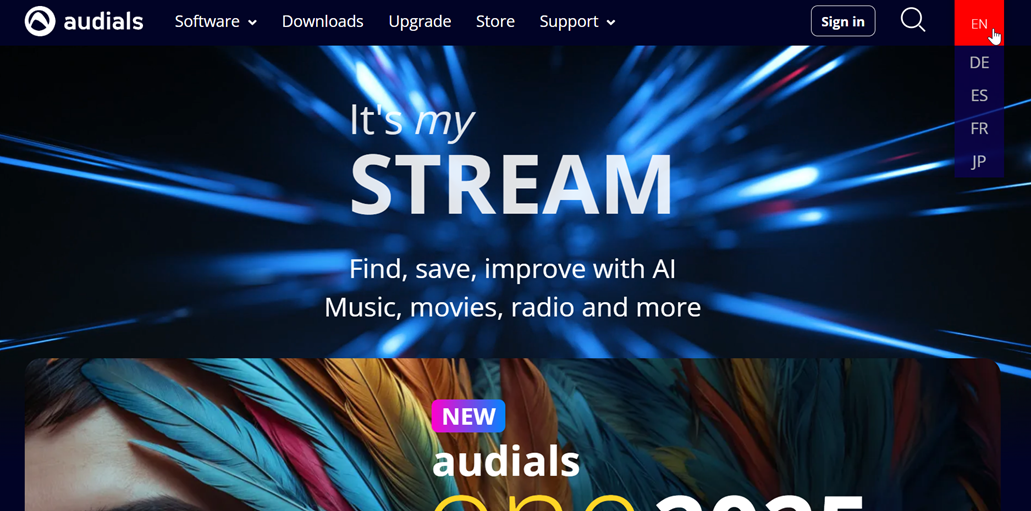
Audials is a technology company that provides comprehensive digital entertainment software solutions. Their flagship product, Audials One, offers a wide range of features, including content search, storage, and enhancement using AI for music, movies, radio, and more. With over 15 million users worldwide, Audials has established itself as a player in the industry.
The Audials website reflects the company’s global focus by providing a language switcher at the top right corner of the page. This dropdown menu allows visitors to switch between multiple languages, including English (EN), German (DE), Spanish (ES), French (FR), and Japanese (JP). The feature ensures that customers from different countries can easily access information and use their products in a language they understand.
Mosa

Mosa is a leading ceramics company that has been operating for over 140 years, specializing in the production of high-quality tiles with innovative Dutch designs. The Mosa website reflects the company’s focus on “signature surfaces with timeless design”, featuring a wide range of tile products for walls, floors, facades and terraces.
The Mosa website features a comprehensive language switcher in the top right corner. This dropdown menu offers a wide range of language options, including Nederlands (Netherlands), English (global), English (US), Deutsch (Germany), and Français (France). This wide availability of language options demonstrates Mosa’s global reach, serving clients in more than 50 countries across four continents.
How to implement automatic translation on Concrete CMS
After reviewing multilingual site examples built with Bubble.io, the next step is implementing automatic translation using a translation service. Several services offer fast and simple website translation with minimal setup. One popular option is Linguise.
Linguise seamlessly integrates with different CMS platforms and web builders, including Concrete CMS. Below are the steps to install Linguise automatic translation on Concrete CMS.
Step 1: Register your domain website
Begin by creating a free Linguise account and adding your website’s domain. You can use the 30-day free trial before committing to a subscription.
Then, you’ll need to register your domain for translation authorization. Copy your domain name, including the “https://” part, and select “Concrete CMS” as the platform.

Select the source language and the languages you want to translate into for automatic translation setup on Concrete CMS.

Step 2: Upload & connect the Linguise script
The Linguise translation script must be uploaded to the server where Concrete CMS is installed. You can download the script from the link provided.
Once downloaded, unzip the file and upload it to the root directory of your Concrete CMS installation. Ensure that the script is placed in the root folder where your Concrete CMS files are stored, and keep the folder name as “linguise.”
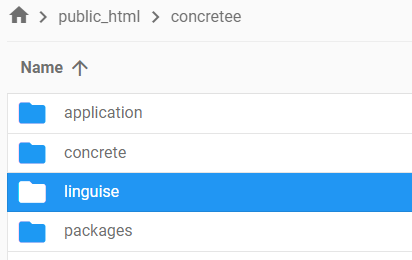
Next, you’ll need to insert the Linguise API key into the Configuration.php file uploaded to your server. Open the file, and replace the text “REPLACE_BY_YOUR_TOKEN” with your API key, placing it between the single quotes.

Step 3: Setup Concrete CMS URLs rewriting
In Concrete CMS, URL rewriting is enabled by default. However, you can activate it through your hosting provider if it isn’t.
You must update the .htaccess file to configure the URL by language. Simply add the following code after the “RewriteEngine on” line in the default Concrete CMS .htaccess file. Your .htaccess should resemble the following example.
<IfModule mod_rewrite.c>
RewriteEngine On
RewriteRule ^(af|sq|am|ar|hy|az|eu|be|bn|bs|bg|ca|ceb|ny|zh-cn|zh-tw|co|hr|cs|da|nl|en|eo|et|tl|fi|fr|fy|gl|ka|de|el|gu|ht|ha|haw|iw|hi|hmn|hu|is|ig|id|ga|it|ja|jw|kn|kk|km|ko|ku|ky|lo|la|lv|lt|lb|mk|mg|ms|ml|mt|mi|mr|mn|my|ne|no|ps|fa|pl|pt|pa|ro|ru|sm|gd|sr|st|sn|sd|si|sk|sl|so|es|su|sw|sv|tg|ta|te|th|tr|uk|ur|uz|vi|cy|xh|yi|yo|zu|zz-zz)(?:$|/)(.*)$ /concretee/linguise/linguise.php?linguise_language=$1&original_url=$2 [L,QSA]
RewriteCond %{REQUEST_FILENAME} !-f
RewriteCond %{REQUEST_FILENAME}/index.html !-f
RewriteCond %{REQUEST_FILENAME}/index.php !-f
RewriteRule . /concretee/index.php [L]
</IfModule>
Step 4: Unable & customize language switcher
The Linguise JS script link must be loaded on all your Concrete CMS pages to display the language switcher with flags and alternate URLs in your HTML headers (important for SEO purposes).
To obtain the script link, go to the Linguise dashboard, navigate to the domain settings, and copy the script link.

The simplest way to load this code in Concrete CMS is by adding it to your website’s header.php or inside your site’s <head> section. You can do this by accessing the Admin panel and then going to System & Settings > SEO & Statistics.
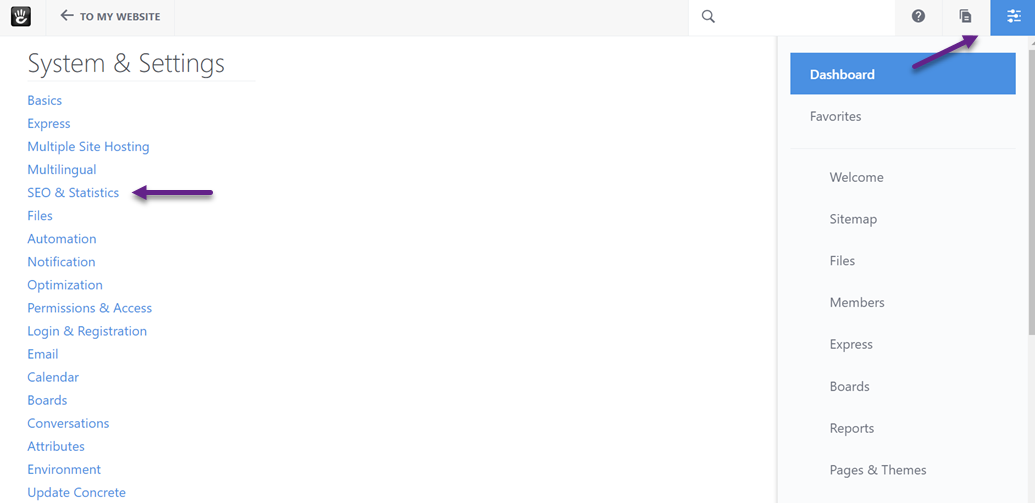
Then click Tracking Codes and insert your code as shown below.
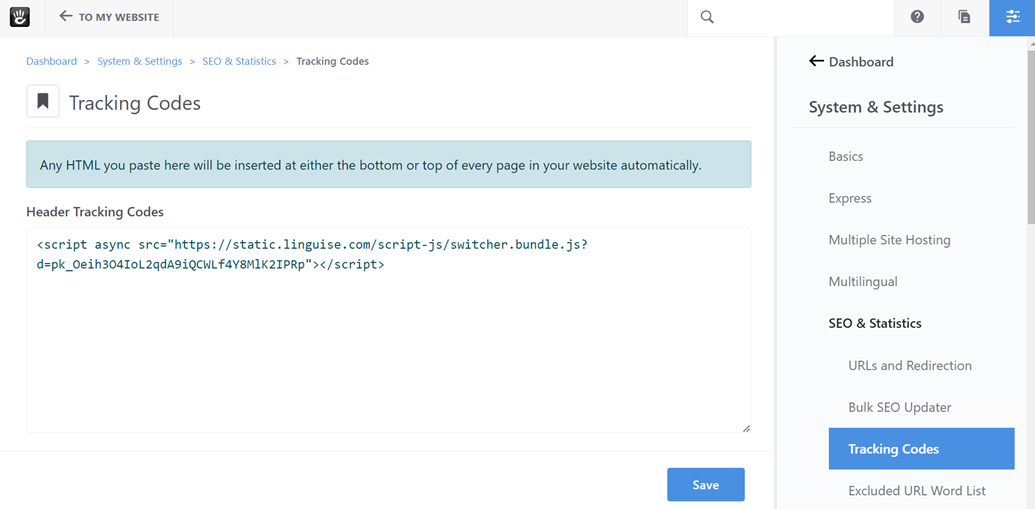
By default, the language switcher will appear at the top right of your site. You can customize its appearance, as explained in the following section.
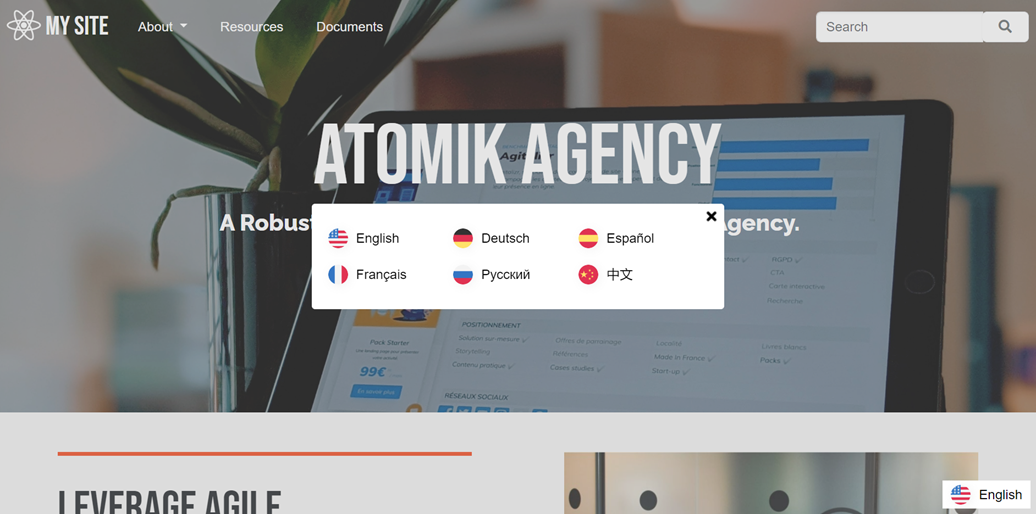
You can customize the language switcher with your dashboard’s “Language flags display” feature.
Step 5: Automatically translate your website
Here’s an example of how Concrete CMS looks when using Linguise’s automatic translation service for seamless language translation.
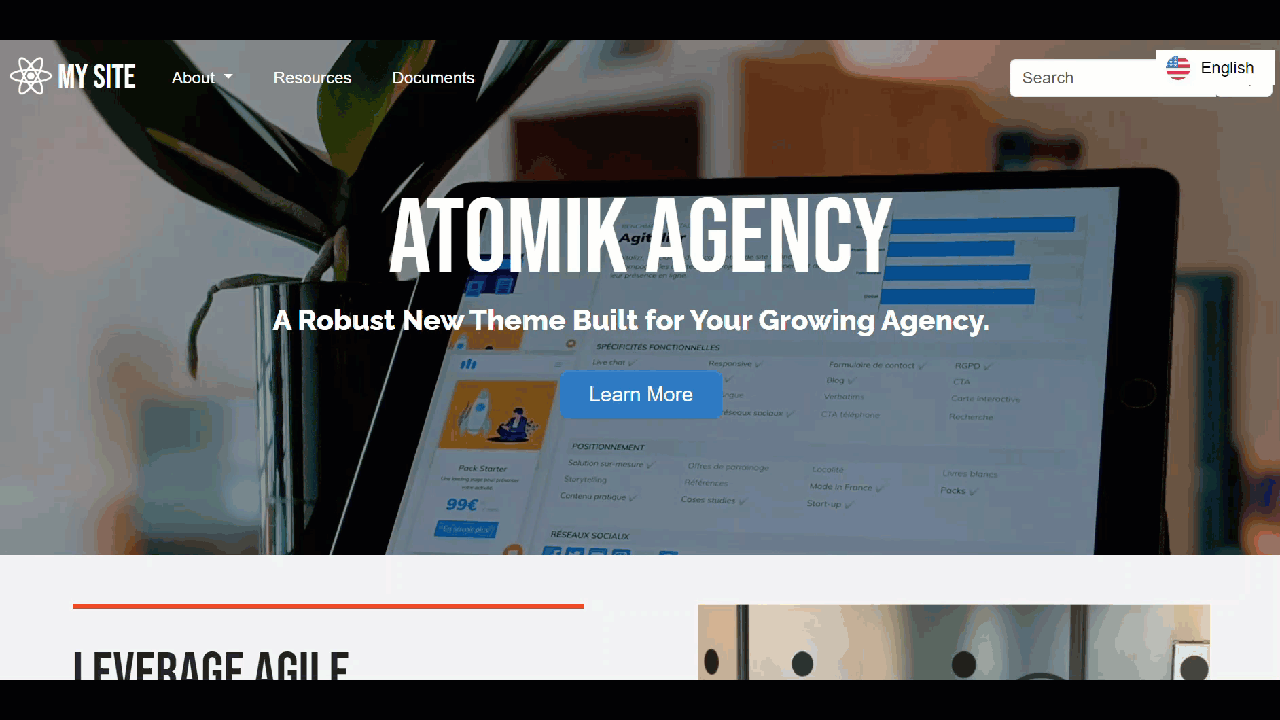
Automatically translate your Concrete CMS with Linguise
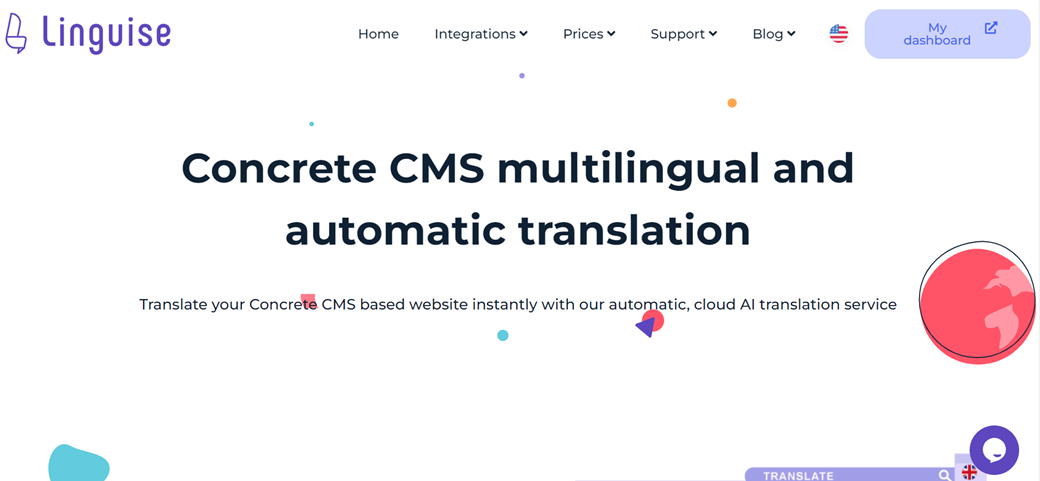
Linguise integrates with Concrete CMS. As a top translation service, it supports over 80 languages and works with over 40 CMS platforms, including Concrete CMS. This integration simplifies building a multilingual website and improves user experience. Here are the main features you can expect to get.
Automatic multilingual SEO optimization
To boost your site’s visibility, Linguise provides robust multilingual SEO support. It enhances SEO by generating multilingual sitemaps, adding hreflang tags, setting canonical URLs, and translating URLs and meta descriptions. These features help improve search engine rankings and make your site more accessible to diverse users.
Flexible editing with front-end live editor
Linguise features a front-end live editor, allowing you to adjust translations on the site quickly. This ensures translations are accurate and easily modified. You can also collaborate with professional translators to ensure cultural and contextual relevance.
In the front-end live editor, you can invite professional translators to collaborate within your dashboard, ensuring that your content maintains cultural and contextual accuracy.
Global translation exclusion rules
Linguise also offers global translation exclusion rules, enabling you to exclude specific terms or content that may not translate well. You can set rules to exclude certain pages or inline content to maintain accuracy and clarity in your translations.
Conclusion
Implementing automatic translation on your Concrete CMS website can significantly expand your audience, boost user engagement, and improve conversion rates. With Linguise, managing multilingual content becomes effortless. It provides a smooth experience for users in different languages while optimizing your SEO efforts.
Linguise offers robust features like front-end live editing, dynamic content translation, exclusion rules for certain terms, and comprehensive SEO support. These features make it an excellent solution for integrating automatic translation with Concrete CMS. Ready to get started? Sign up for Linguise’s account and turn your Concrete CMS website into a fully multilingual platform.

